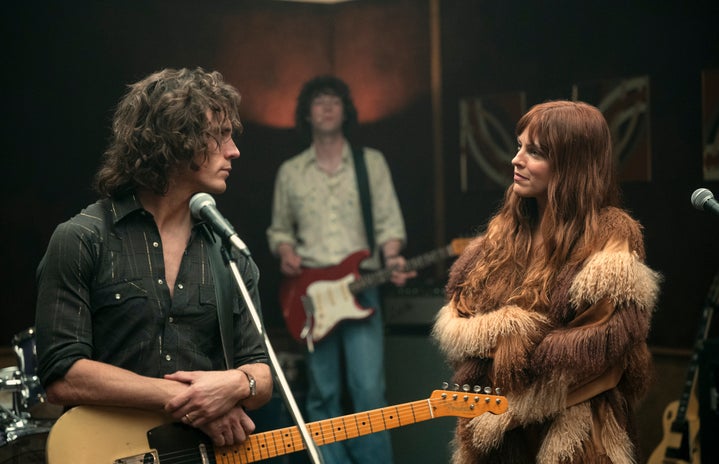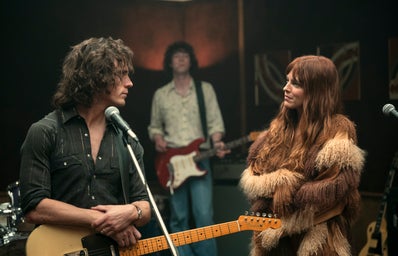Daisy Jones is not the manic pixie dream girl people want her to be
Trigger warning: Mention of sexual assault
The long-anticipated TV show, Daisy Jones & The Six, has finally been released to Hulu in a ten-episode limited series following the success of the 2019 book by Taylor Jenkins Reid. This show follows the story of the band, “The Six” and how they rose to fame with the help of the titular character Daisy Jones. Daisy Jones fits into the mold of the manic pixie dream girl. As the show progresses, audiences find that she is the antithesis of this trope and establishes herself as an anti-hero. Note: spoilers ahead.
We all know the manic pixie dream girl trope. Manic pixie dream girl is lonely. She is quirky. She is a broken human wandering the world, waiting for someone to save her. She enters her love interest’s life and turns it upside down. She is a muse. She helps others find their way. She exists for other characters’ development. Daisy checks a lot of the boxes of the manic pixie dream girl trope. She experiments heavily with drugs and alcohol to deal with her trauma. She smokes cigarettes and spouts philosophical nonsense about life, death and everything in between. She doesn’t look like other girls—she has red hair, bangs and a quirky fashion sense. She serves as a fantasy for the character Billy, who wants her but could never have her since he is married. Daisy is free-spirited, whimsical and seductive; she joins the band and immediately changes their lives. She helps Billy deal with his problems and gives him a new perspective on life. Despite all this, casting Daisy Jones as a manic pixie dream girl ignores her entire being. Daisy is better defined as an anti-hero.
An anti-hero is “a central character in a story who lacks conventional heroic attributes” (Oxford Dictionary). Daisy is a hero in her own way. She is far from a perfect character, swooping in to save the day. She is messy, narcissistic and impulsive. She rejects the idea of being the hero. She tells Billy, “I’m not interested in being anybody’s muse. Not yours, not anybody’s. I’m not the muse, I’m the somebody.” She despises the fact that Billy loves the idea of her, not her. She wants to exist for her own sake, not to further someone else’s growth.
Daisy has experienced trauma. She grew up with parents who did not care about her, with her mother even saying, “Nobody wants to hear your voice” as she expressed the desire to become a singer. She is sexually assaulted in another scene. This trauma eats at Daisy throughout the show, leading her to overdose. This is on par with the manic pixie dream girl trope, but the way she proceeds after the assault changes her narrative. Quitting the band and checking herself into rehab, Daisy creates something better for herself than she was given. She becomes somebody that you want to root for. She grows up, becomes a solo artist and has a child. Her rebellious streak served as a plot device for true growth and development. Many manic pixie dream girls do not recover. They die, like in Looking for Alaska or end up dating the main character like in The Perks of Being a Wallflower. Daisy does not die or end up with Billy. She knows that her life can be better and she makes it happen. She knows that if she continues the path she is on, she is doomed to forever be the other woman, so she takes herself out of the equation. She does not resent Billy or Billy’s wife Camila. She even befriends Camila. She knows she is worth more than being a fantasy. She lets Billy go to further her own growth, not his.
Daisy is a complex character and should not be simplified to a plot device whose only purpose is to further Billy’s growth. In the TV show, she serves as more of a manic pixie dream girl, but in the book, she is multifaceted and her growth is integral to the plot. Daisy is an example of a character who can be fun and whimsical, but ultimately saves herself in the end. I recommend reading the book and then watching the TV show on Amazon Prime to determine for yourself: Who is Daisy Jones?


